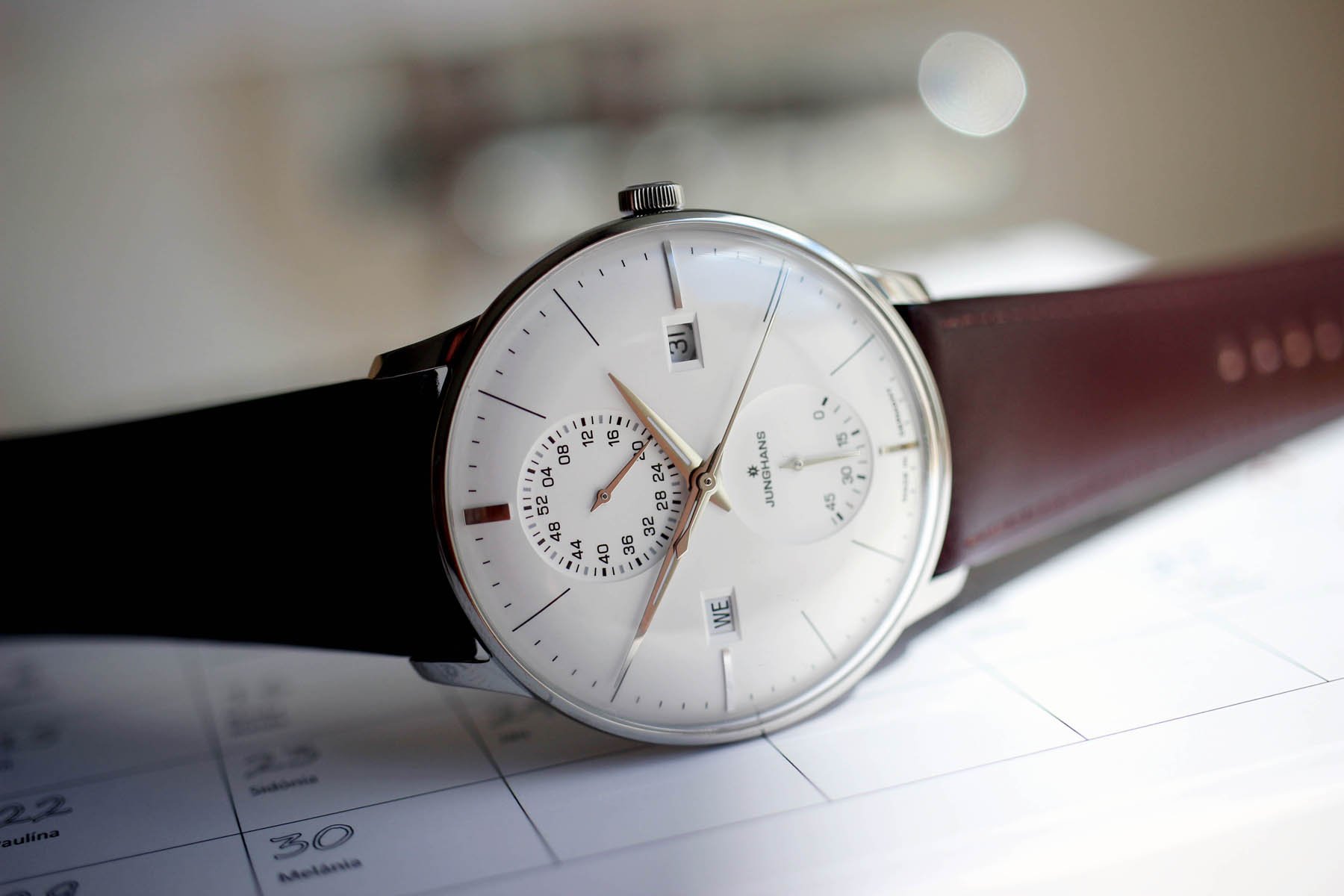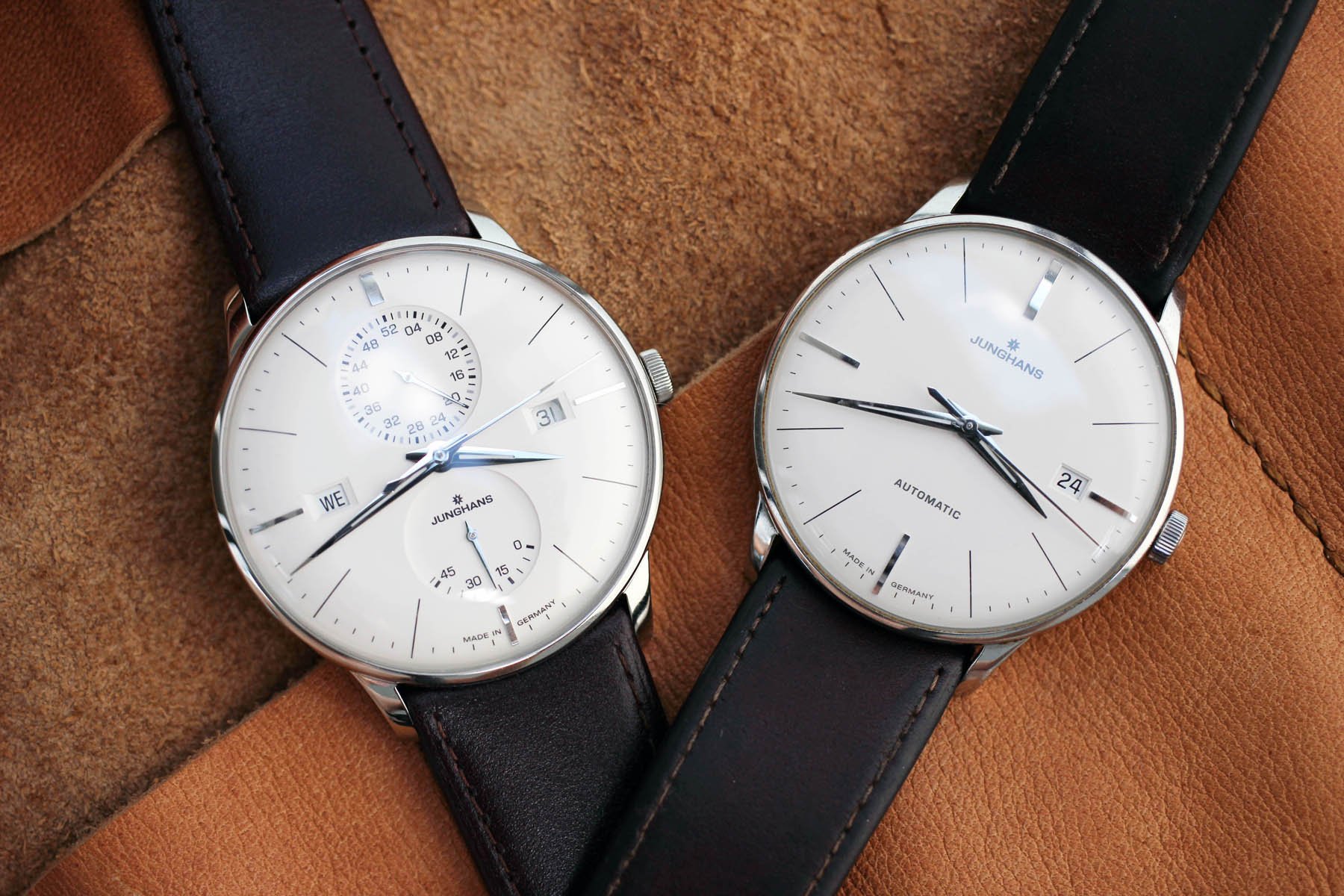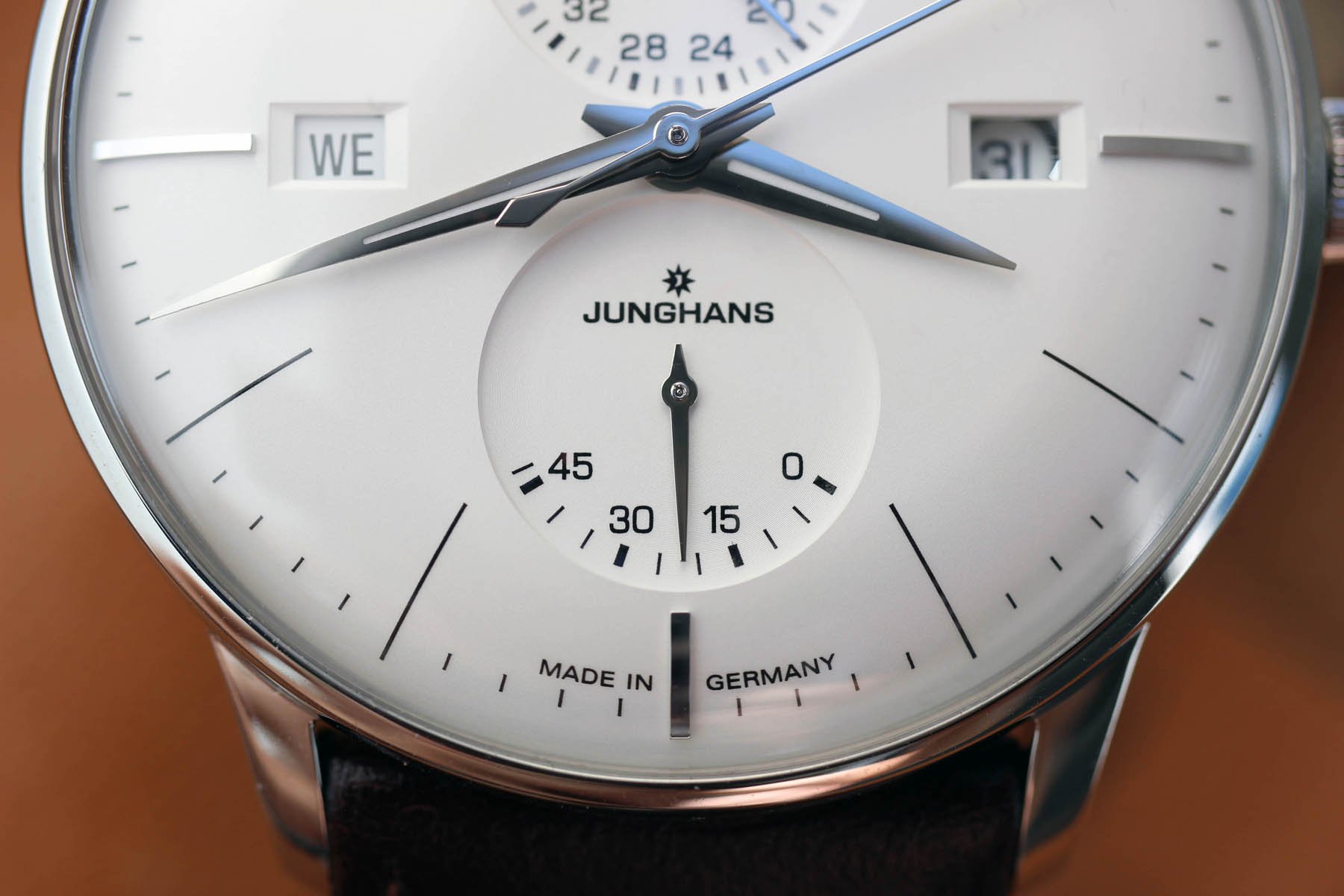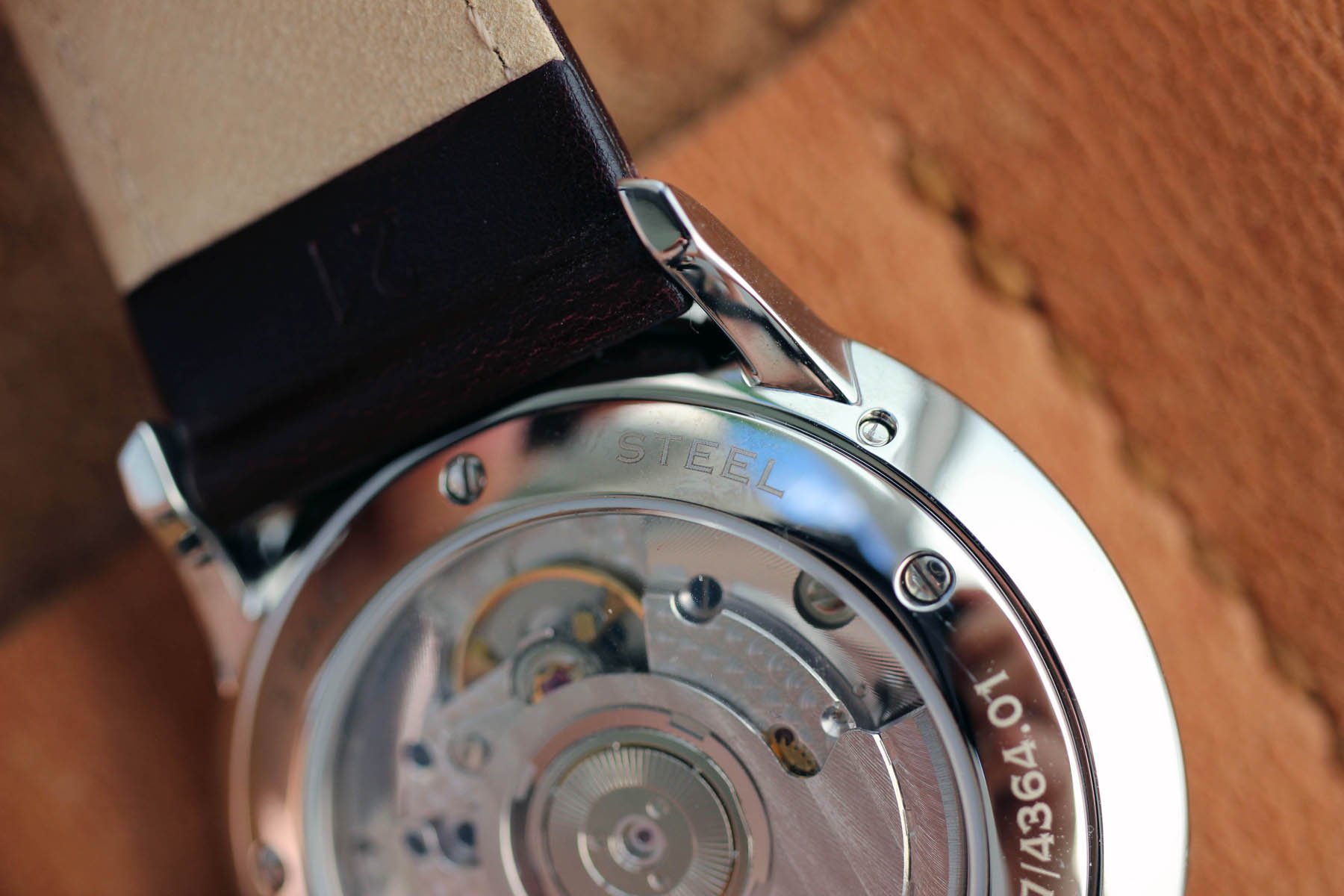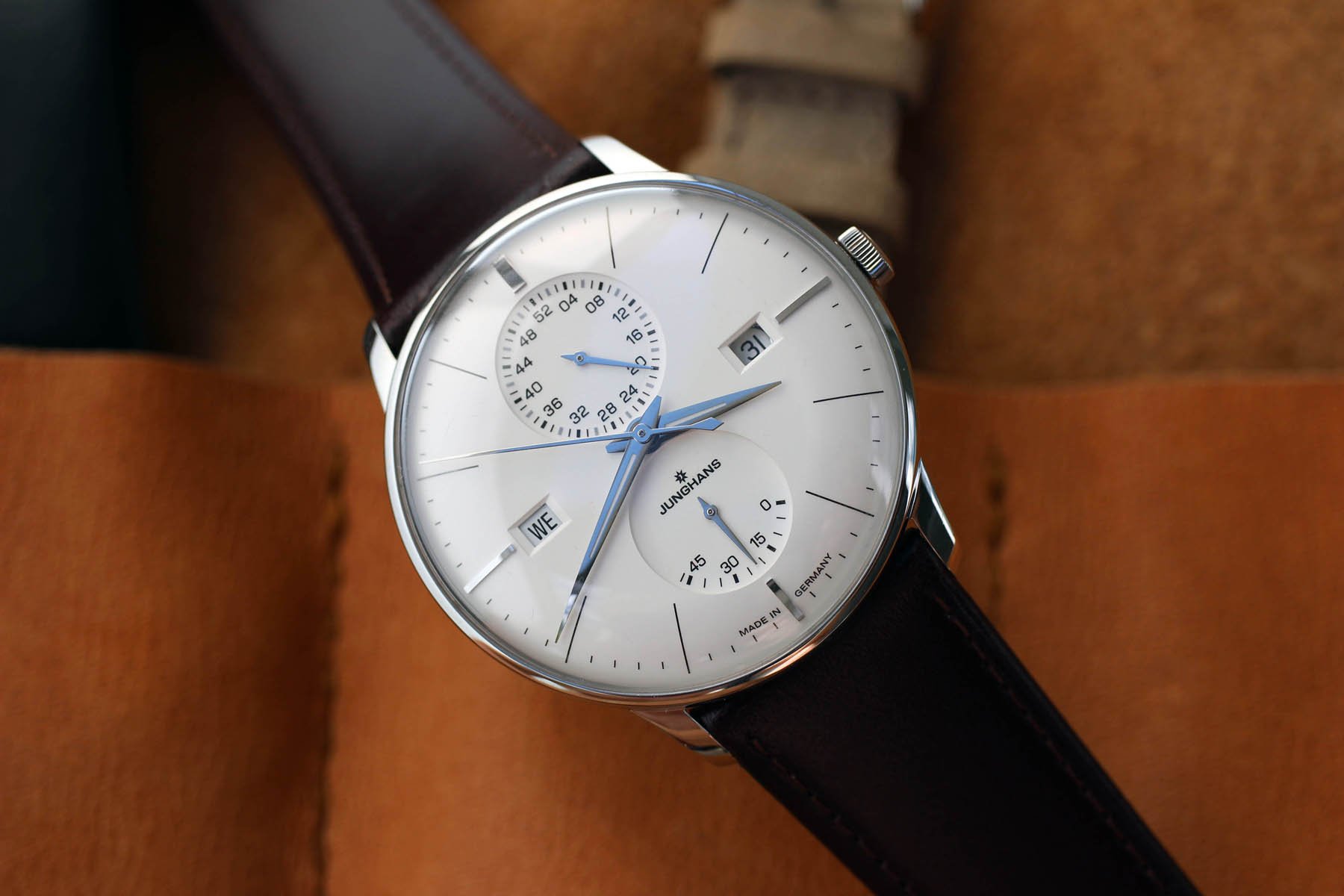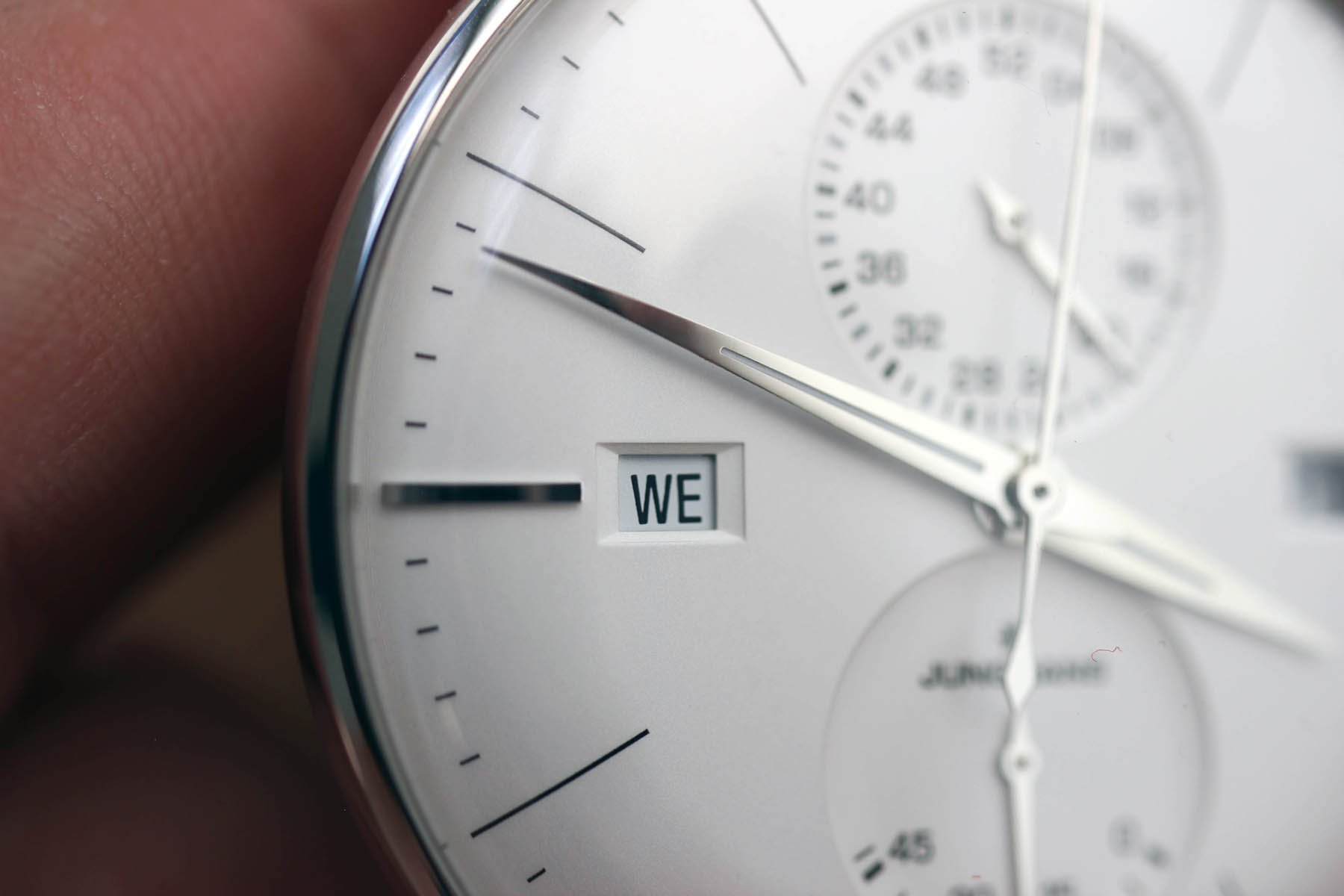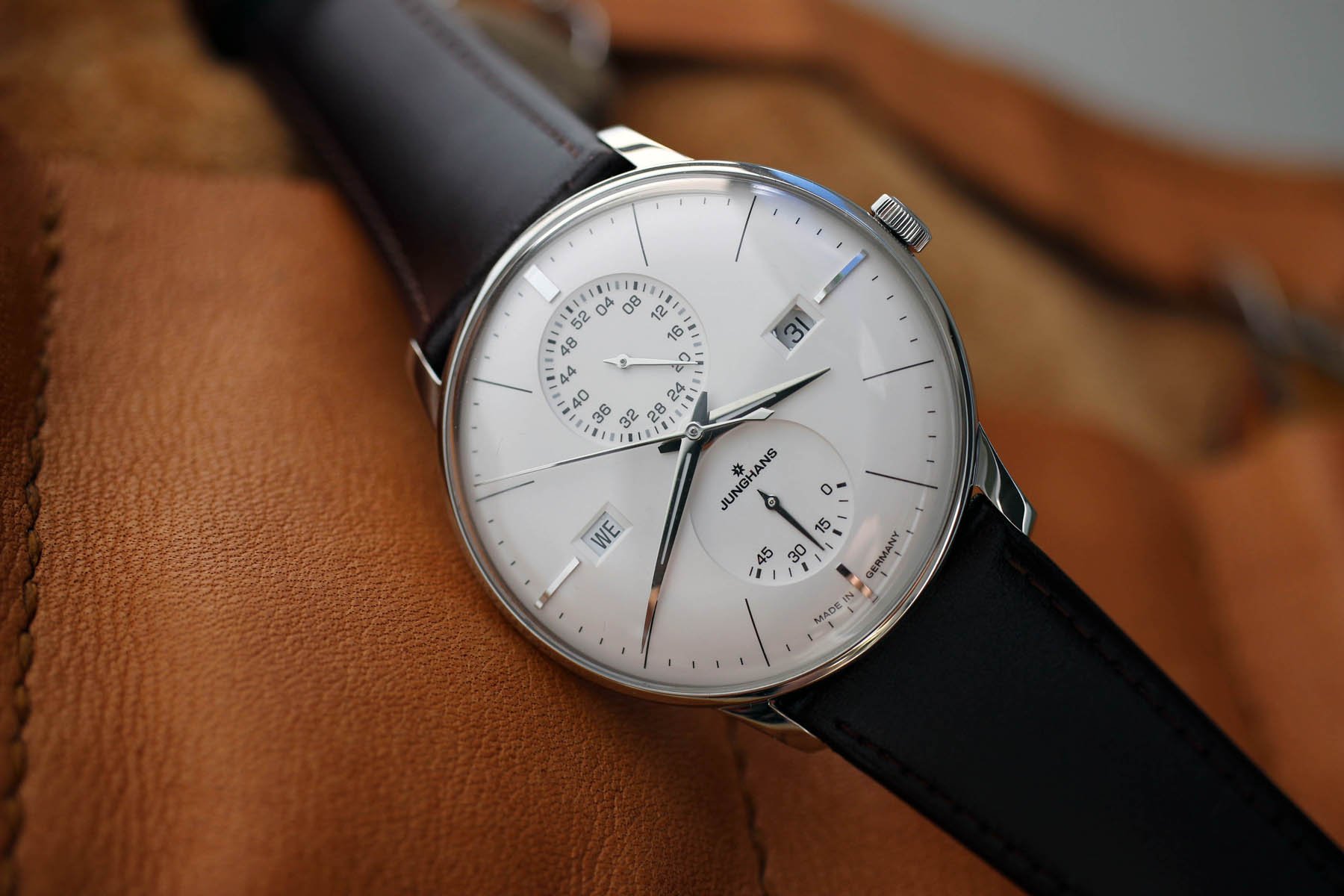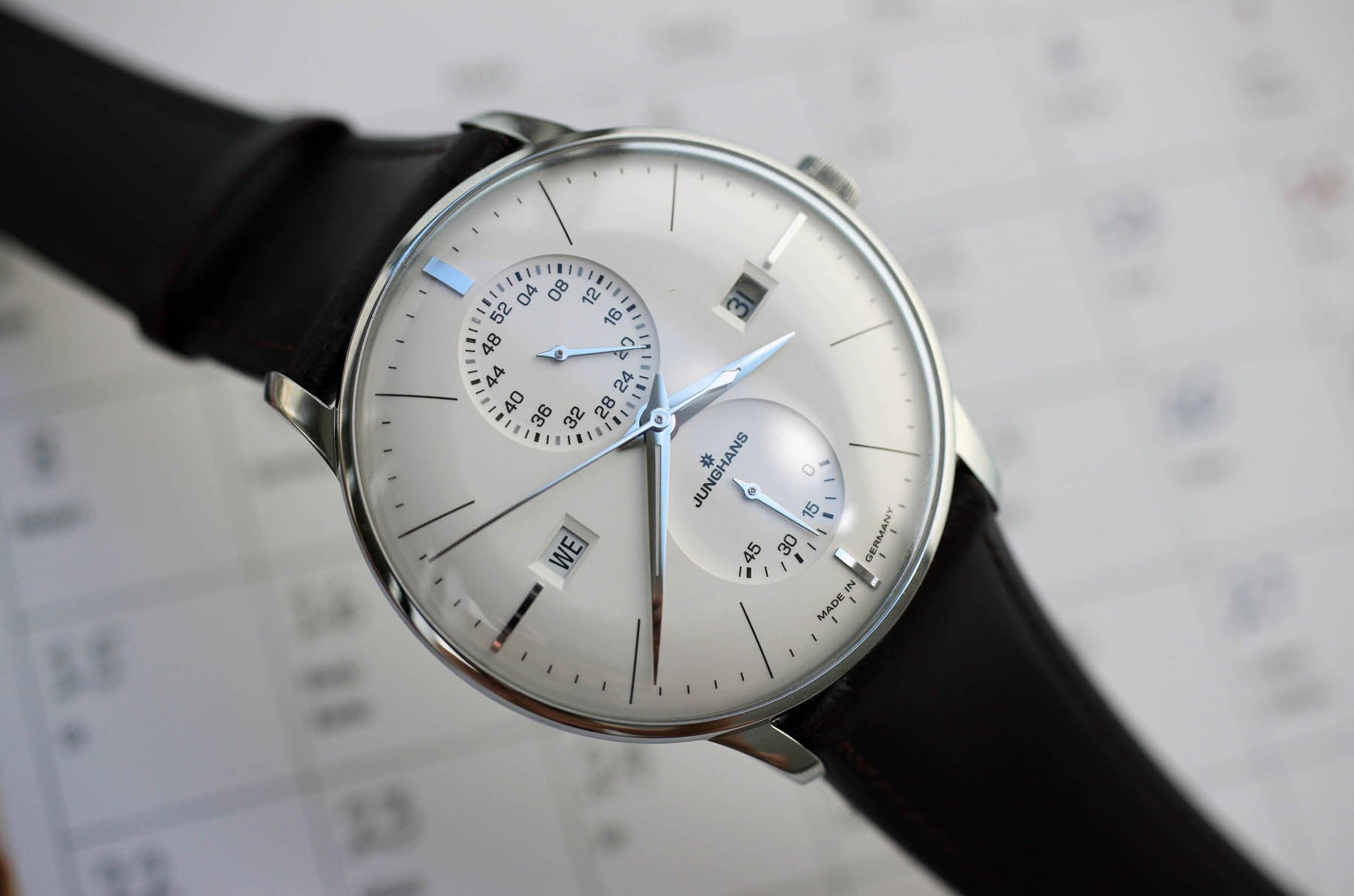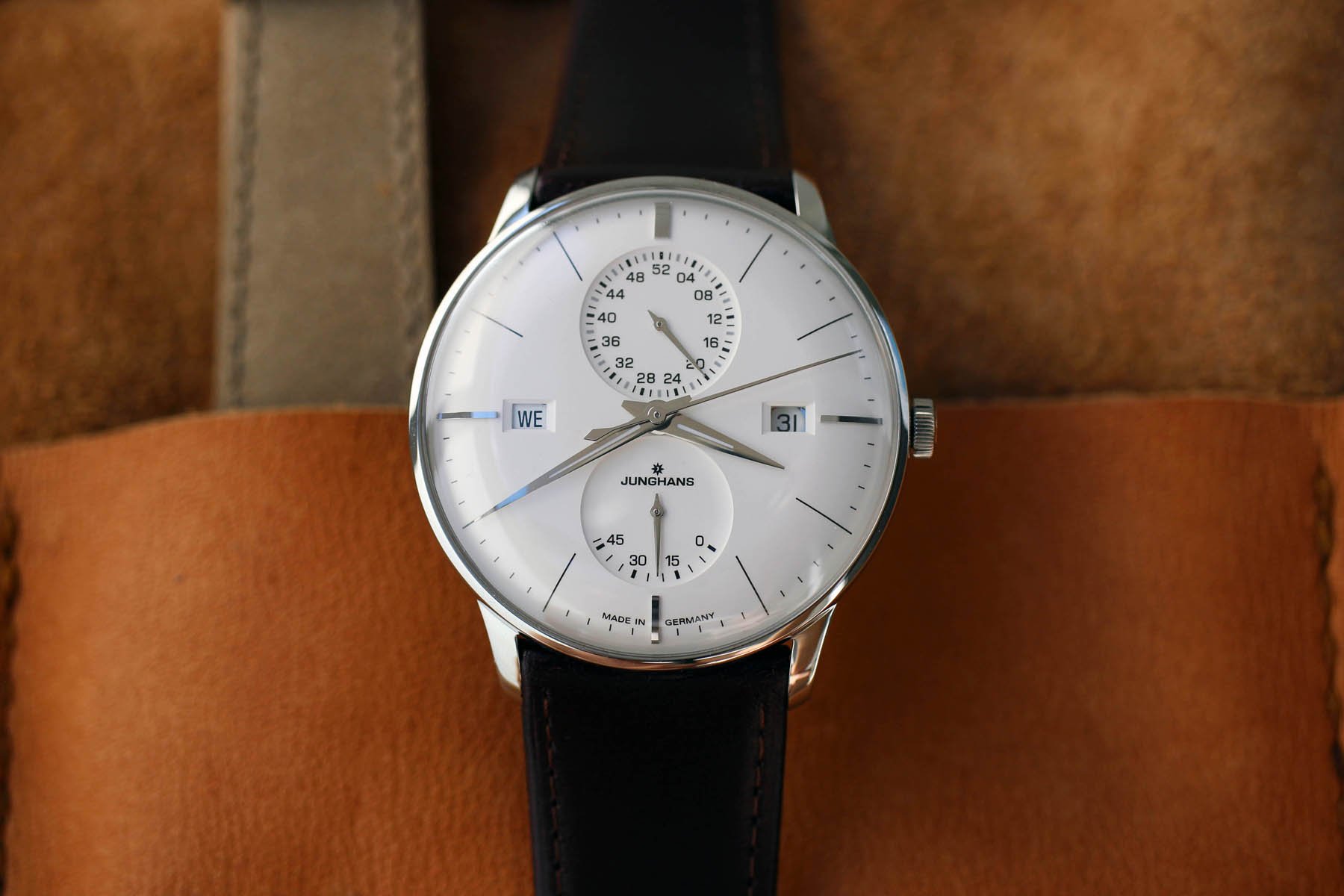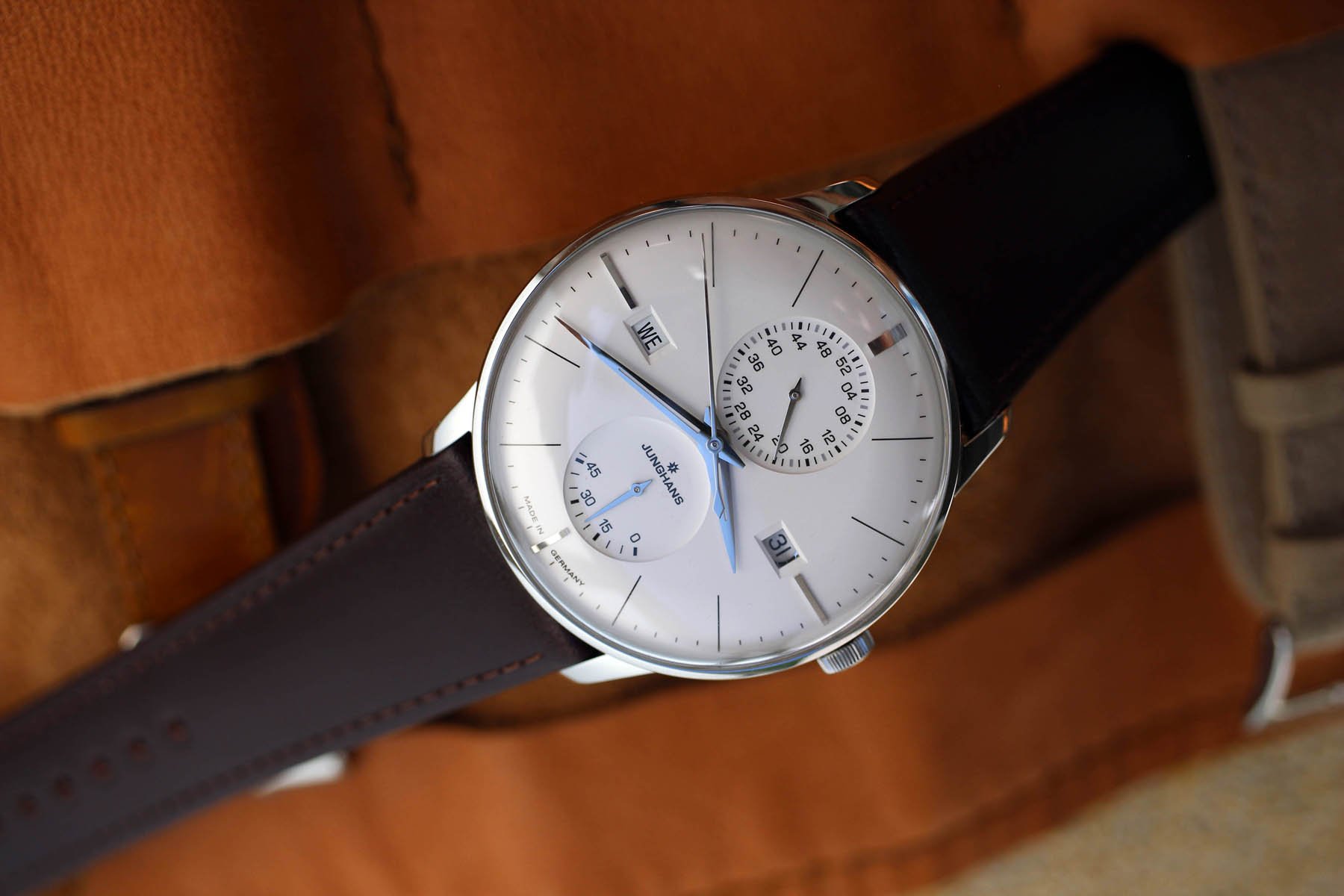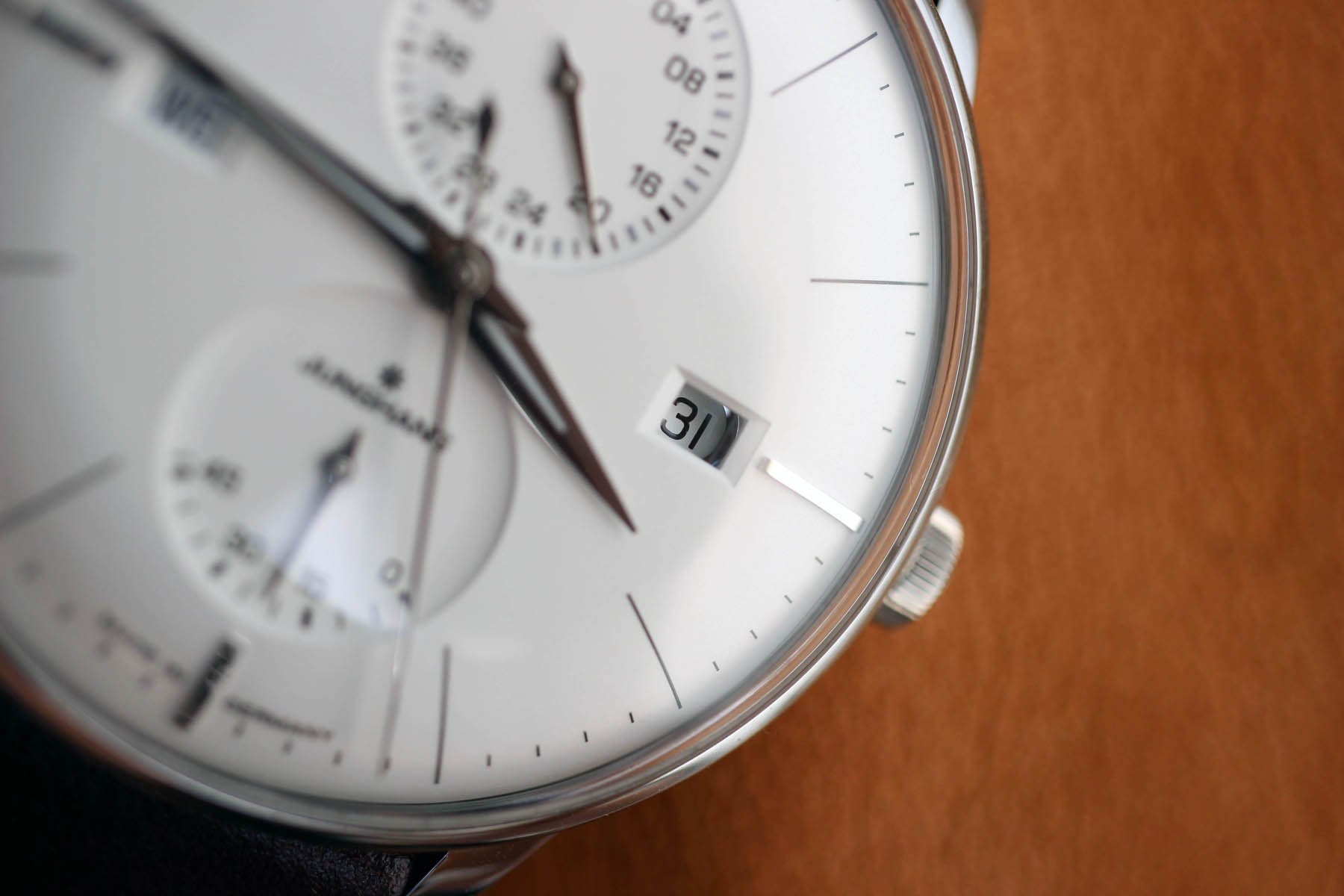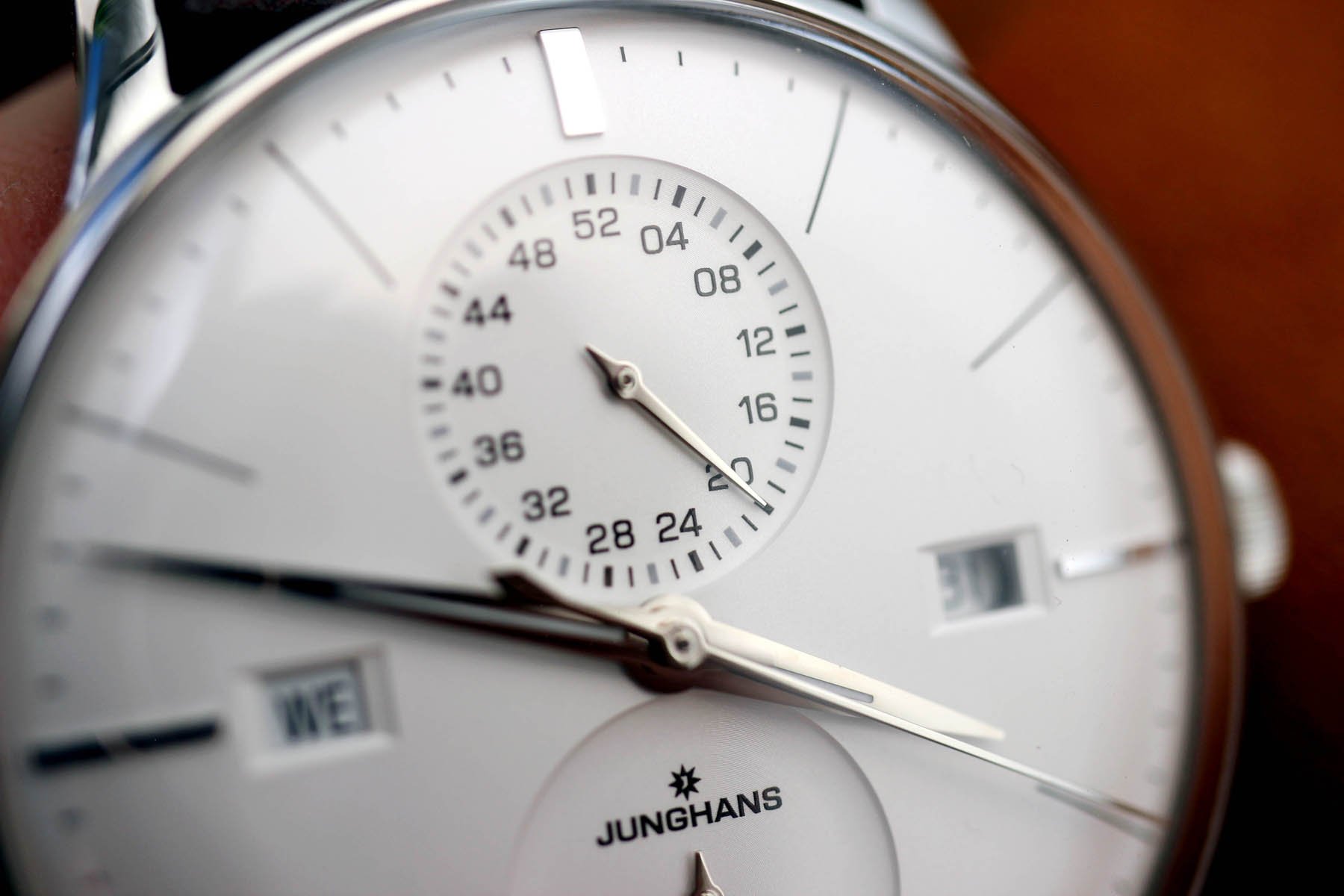Hands-On With An Unusual Junghans Meister Agenda
The Meister Agenda is a watch I can’t forget about. Over the last five years, I’ve found myself visiting coming back to the Junghans website again and again. Ever since I stumbled upon the weekly calendar complication out of necessity, I’ve not been able to shake my desire for one…
One of my companies develops a software platform that we’re constantly updating with new features. If you are a bit familiar with software project planning, there is something called agile development. Rather than waiting two years for a programmer to “finish”, the new product is retooled and refined on the go. We release updates in 2-weeks intervals, called sprints. Such management allows constant testing, re-iterations, and flexible pivoting along the way even with complex and complicated projects.
Junghans Meister Agenda for project planning
New feature release dates are always aligned with particular weeks in the year, i.e. Week 17, Week 42, Week 51… I remember many a meeting with my product and development teams, during which week numbers were flying all around the room. Whenever I asked about a new feature’s status I would be greeted with a week number. Call me crazy, but I don’t have those pre-loaded in my brain.
After a few frustrating meetings, I realized how great it would be to have a watch showing the current week number. I could barely believe it when Google turned-up an existing complication (and in an affordable package, no less).
Sympathies to the German manufacturer
Junghans is no stranger to me. In 2014 I entered a watch boutique in Vienna quite sure, I was going to buy a Junghans Max Bill watch. Quite unexpectedly, I ended up with a simple three-hander automatic from the Meister model range. My urge to have a weekly calendar came a year after, but I never pulled the trigger. The Junghans Meister Agenda is available in more dial and case variations. I was really hankering for the gold-toned model, but I guess the idea of having two beautiful clean white dial twins sitting next to each other was too tempting.
First impressions
I never studied the Meister Agenda parameters before and so I was surprised to find that these models came in different cases. Of course, it makes sense when you think about it. The Calendar model has several more wheels it needs to make space for. Despite this, the profile is surprisingly thin. The lines are Germanically perfect with just the right dash of elegance to keep things from tipping over to sterile. If you haven’t seen this Junghans watch in the metal before, do it. I am not trying to sell it to you, I just believe it has a really minimalistic look and feel that you should appreciate firsthand to really get to grips with the watch’s character.
White here isn‘t an adjective. It’s not just a dial that is white. White is THE thing. It has a substance of its own.
I don’t know how to say it any better than Junghans has found its own way of treating round edges and convex shapes. Whether it’s the Plexi or the lugs. They all seem to fold into one another. In places, the confluence of these elements has a softer appearance than should be possible given the materials in play. Rather than steel and Plexiglass, these watches give the impression of being made of something between fabric and liquid despite coalescing to form something undeniably austere (especially in photographs).
I am not sure if you could feel it in pictures either, but it seems Junghans has “patented“ their own type of white. Speechless clean white. My older Meister Classic is six years old now, but still amazes me with its fields of pure white. White here isn‘t an adjective, I mean white as a noun. It’s not just a dial that is white. White is THE thing. it has a substance of its own.
Sub-register poetry
The Meister Agenda somehow manages to step-up the white charm even further. That’s especially true of the spacious 6 o’clock sub-register. Instead of a cluttered affair, here we have a remarkably sparse scale. This has to be my very favorite power reserve indicator. While power reserve indications are often backed by specially-shaped recesses (normally a gauge of some description), here it simply occupies the lower half of a more symmetrical sub-dial.
Weekly calendar
The upper subregister accommodates the real selling point of this watch — the weekly calendar. Once a month, or every fourth week if you prefer, there is an Arabic number to show a specific week. If you look closer, you will notice that the week in between is highlighted in grey. I have to admit I almost missed the tiny pusher sunk in the case on the bottom side that allows you to advance the hand pointing to the weeks. It works simply and easily.
I spoke to Anne-Katrin Strömer from Junghans and asked why they decided to implement such a complication into their portfolio. “In Germany, many companies and project managers work with calendar weeks. Hence we wanted to serve this demand for businessmen keeping track of bigger projects.” Strömer confirmed that I was not the only customer with this requirement. The Meister Agenda joined the Junghans portfolio in 2013 and has been everpresent since.
Symmetry & simplicity
I posed Strömer a question I would love to ask designers of all vintage watches I reviewed on #TBT: who designed the watch and what was the development process like? “Our designers Volker Fuchs and Hans Grammel have been with Junghans for more than 20 years. Volker Fuchs is very experienced with the design and the construction of watches. They paid particular attention to the symmetrical appearance of the dial. The Day/Date indicators at positions 9 and 3 harmonize with the calendar week and the power reserve indicators at positions 12 and 6 respectively.”.
Mysterious date
I don’t know how the date is constructed, but it almost looks like the date disc was covered with another glass, not just the top Plexiglass. This is not true. It’s just an optical illusion. Katrin confirms that the date read-out is delivered by the base caliber ETA2892, which sits a little deeper in the case. Riding on top of its dial side is the Soprod 9075 module.
Consequently, while the date is quick-set, the day has to be set via the hands. I don’t mind this, however. Weekdays are available in German and English and they are written unusually with two characters only. I guess the reason was to keep the right and left part of the dial balanced.
Shotgun notes
Notice the “window“ framing for the date aperture, the neat decent Junghans branding in the dead space of the power reserve sub-register, and the extra line showing when the power reserve is above 40 hours. Speaking about the power reserve, I found the watch twice with the indicator still showing juice for five hours but the watch already stopped. The strap sits between (unusual) 21mm lugs, but is very durable and wears nicely.
Last thoughts
I was hooked before I asked Junghans for a review sample. Not particularly with the watch, but more so with the idea. The Agenda is an elegant and smart-looking watch. For me, it’s the best thing in the Junghans Meister range. It’s quite conservative but fresh and thoughtful in detail. If you don’t expect a high-grade in-house movement, you won’t be disappointed. It’s a reliable dress watch and has a surprising complication that can be really useful. The strictly geometrical arrangement of functions is unusual, but I am sure it attracts many eyes. And you hardly get bored too.
Follow me on Instagram @rosputinsky_tomas

